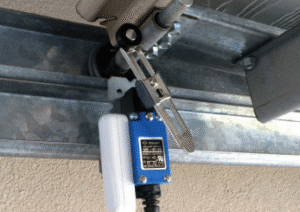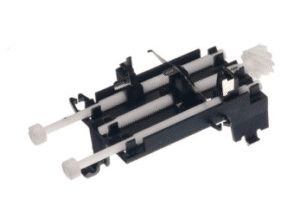This guide will help you fix or replace a faulty garage door limit switch. Learn what it means and how to handle it safely.
Suppose your garage door won’t close completely, reverses unexpectedly, or the opener motor keeps running even after the door has stopped. In that case, the issue likely involves the limit switch on garage door systems. This component controls how far your garage door travels during opening and closing cycles. When the limit switch is misadjusted or faulty, it can cause operational problems that impact both the performance and safety of your garage door system.
For homeowners and property managers in Texas, Tarrant County Door and Gate offers trusted solutions for diagnosing and fixing issues related to the limit switch on garage door mechanisms. Their experienced team understands how this minor yet crucial part can disrupt your daily routine. Whether you’re dealing with a door that won’t stay shut or an opener that won’t stop running, their technicians provide accurate repairs and tailored service to keep your garage door operating smoothly.

What Is a Limit Switch on a Garage Door?
A limit switch on garage door systems is an electrical component inside the opener that controls how far your door travels. Based on the door’s position, it tells the motor when to stop moving, both during opening and closing.
Essentially, the limit switch defines the top and bottom range of motion. Once the door hits one of those limits, the switch triggers the opener to stop. This prevents the system from over-extending, slamming, or continuing to run unnecessarily.
Why It’s Essential to Safe Operation
A properly functioning limit switch is vital for both safety and performance. Here’s why:
Prevents Over-Travel and Motor Burnout
The limit switch stops the opener once the door reaches its endpoint. Without it, the motor may overrun, causing unnecessary wear or damage to the track, gears, or opener.
Ensures Precise Door Positioning
This switch ensures your garage door opens fully and closes completely, with no gaps or overshooting. It creates accurate, repeatable movement every time, improving safety and the door’s operational lifespan.
Protects People and Property
A malfunctioning switch may cause the door to slam shut or reverse unexpectedly. This threatens vehicles, children, pets, or anyone standing too close to the moving door.
When set correctly, the limit switch on garage door openers helps your door operate smoothly and safely every time.
Common Signs of a Faulty Limit Switch
Do your garage door problems stem from the limit switch? Look out for these common signs:
- The door stops short of closing or reopens mid-cycle
- The opener keeps running after the door stops moving.
- The door slams into the floor or doesn’t open all the way.
- Inconsistent stopping points during operation.
- Random reversals or jerky movements.
These issues often indicate a misaligned setting or a damaged switch. Tarrant County Door and Gate can help determine your problem and provide a quick fix.
Misalignment vs. Malfunction
Understanding the difference between a misaligned and malfunctioning limit switch helps you know when to call for help.
Misalignment
Vibrations or DIY adjustments can knock the switch out of place over time. This causes the opener to think the door is closed or open before it is.
Malfunction
If the internal parts of the switch are worn or damaged, they might not send the proper signals, leading to complete failure or erratic behavior.
Both issues can look similar on the surface, but require different fixes. That’s where Tarrant County Door and Gate shines, quickly diagnosing and treating the root cause.
DIY Troubleshooting: What Homeowners Can Check
If you’re comfortable doing a quick inspection, here are a few safe steps to check the limit switch on garage door openers.
Locate the Limit Switch
The limit switch is typically mounted on the garage door opener’s motor unit. Look for two plastic dials or sliding tabs labeled “up” and “down”—these control door travel limits.
Inspect for Apparent Damage
Carefully examine the opener and limit switch area for any signs of trouble. Look out for frayed or loose wires, visible corrosion, or cracked plastic that may impact performance or safety.
Make Minor Adjustments
Use a flathead screwdriver to slightly turn the limit switch dials—about ¼ turns at a time. Adjusting these controls helps fine-tune how far the door travels when opening or closing.
Do not open the motor housing or attempt internal repairs unless trained. Doing so can void your warranty or cause more damage.
When to Stop and Call Tarrant County Door and Gate
DIY tweaks are fine for minor misalignments, but there are clear signs it’s time to bring in a pro:
- The opener still misbehaves after the adjustment
- Wires are exposed, corroded, or disconnected.
- The door slams shut, reverses randomly, or makes grinding noises.
- You’re unsure what to do next and want to avoid damaging the system.
In these cases, Tarrant County Door and Gate is your trusted partner. Their technicians can inspect, diagnose, and repair any issue related to the limit switch on garage door systems with precision and care.
Repair or Replacement: What’s the Right Move?
When dealing with limit switch issues, a professional technician will first determine whether the part can be recalibrated or needs full replacement.
- If the switch is working but misaligned, recalibration is enough. This is common and easily fixable with a few tool adjustments.
- If the switch is corroded, broken, or electrically faulty, replacement is required. Signs include erratic movement, failure to respond, or physical damage.
With trained professionals like those at Tarrant County Door and Gate, this evaluation is fast and accurate. Their team arrives with diagnostic equipment and the right parts, so most jobs are completed in one visit.
How Tarrant County Door and Gate Solves Limit Switch Problems

When you choose Tarrant County Door and Gate, you’re choosing a local expert with the tools and experience to get it right the first time. Their services for resolving limit switch on garage door issues include:
- Certified and background-checked technicians who know all opener types.
- Thorough diagnostics to identify alignment problems vs. switch failure.
- Fast appointments and fully stocked trucks for same-day service.
- Transparent, honest pricing with no hidden surprises.
- Complete safety checks are included with every visit to ensure long-term reliability.
They don’t just fix the problem; they ensure your entire garage door system is safe, aligned, and performing at its best.
FAQ: Limit Switch on Garage Door
How do I reset my garage door limit switch?
To reset your garage door limit switch, locate the limit adjustment screws on the opener unit. Using a flathead screwdriver, turn the “up” or “down” screw in small increments to set the open and close positions. Test the door after each adjustment to ensure proper alignment and smooth operation.
Where is the garage door limit switch located?
The garage door limit switch is typically located on the opener’s motor housing, near the travel limit adjustment screws. These are usually labeled “up” and “down” or “open” and “close.” They control how far the door travels before stopping, ensuring it opens and closes fully and safely.
What is the purpose of a limit switch on a door?
A garage door limit switch determines the exact stopping points for the door’s open and closed positions. This safety feature prevents the door from over-traveling, protecting the motor and ensuring a secure seal when closed. Properly adjusted limit switches help prevent damage and improve long-term door performance.
How do you adjust a limit switch?
To adjust a garage door limit switch, locate the labeled screws on the opener unit. Turn the “up” screw to adjust the door’s opening distance and the “down” screw to set the closing point. Make small turns, then test the door each time until it opens and closes correctly.
How do you control a limit switch?
A garage door limit switch is controlled manually using adjustment screws on the opener or electronically on newer models via a control panel. Adjustments help fine-tune the open and close points, ensuring proper functionality. Controlling the limit switch ensures safety, reduces wear, and enhances system efficiency.
Conclusion
Tarrant County Door and Gate understands that a malfunctioning limit switch on garage door systems can cause severe disruptions, from doors that won’t close to motors that won’t stop. These small components play a big role in garage door safety and function. Ignoring the signs can lead to bigger issues, including unnecessary wear and costly repairs.
When your garage door starts acting up, don’t take chances. Trust Tarrant County Door and Gate for expert diagnostics, prompt service, and dependable repairs. Whether it’s a misaligned sensor or a faulty limit switch on garage door setups, their team ensures smooth, secure operation every time, giving you peace of mind and lasting value for your home.
End Note
Tarrant County Door and Gate specializes in expert garage door troubleshooting, from precise opener calibration to full mechanical repairs. Whether you’re facing a stuck panel, loud operation, or a faulty sensor, our experienced technicians are ready to help. Visit our official website to explore our full range of garage door repair services and learn more about our team.
We’ve got you covered for additional services like drive gate installations, design inspiration from our gallery, or educational insights from our latest blog posts. Ready to get started? Reach out through our contact page or message us on Facebook to schedule your appointment today.
Tarrant County Door and Gate
1905 Central Dr # 206, Bedford, TX 76021, United States
817-270-9884

